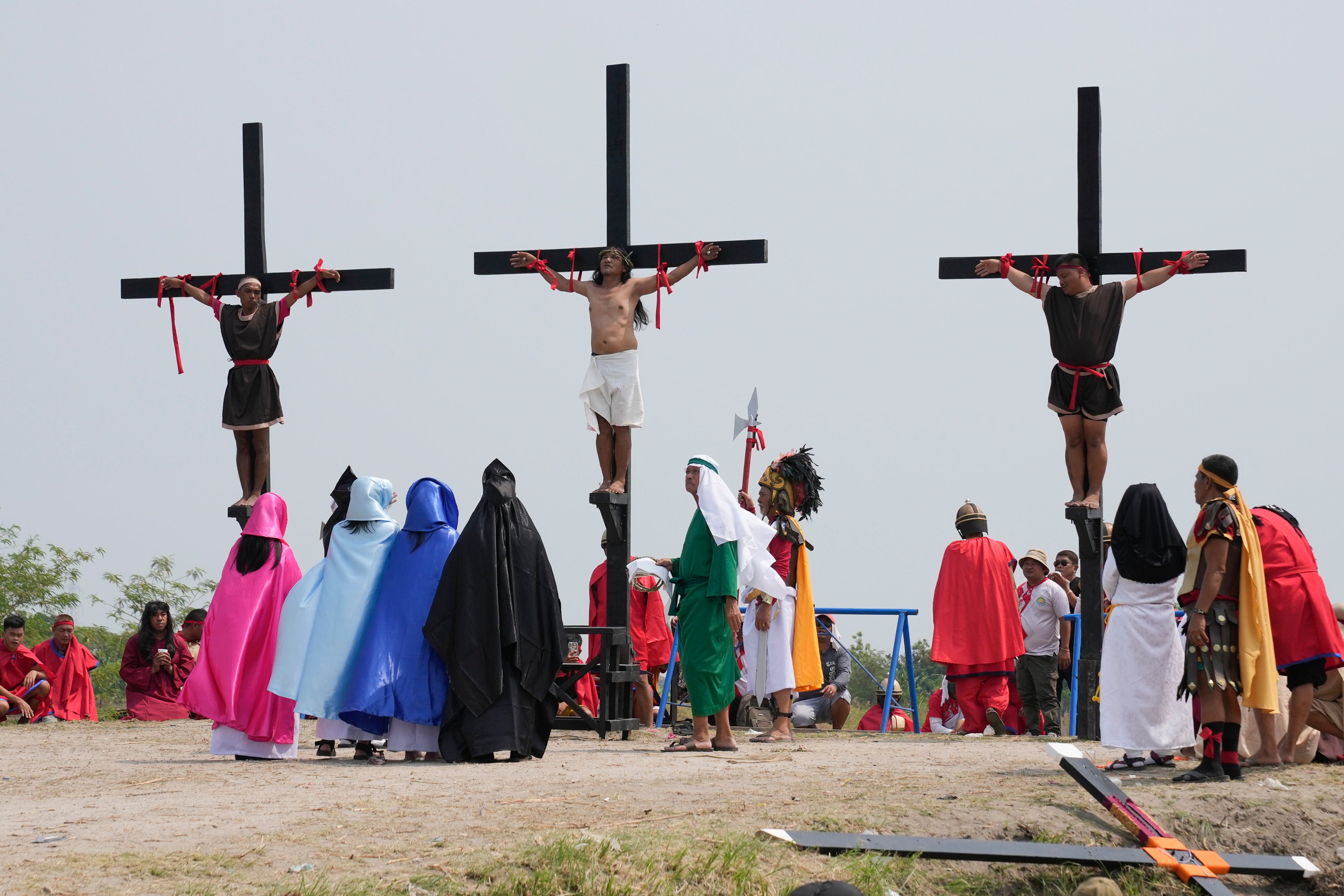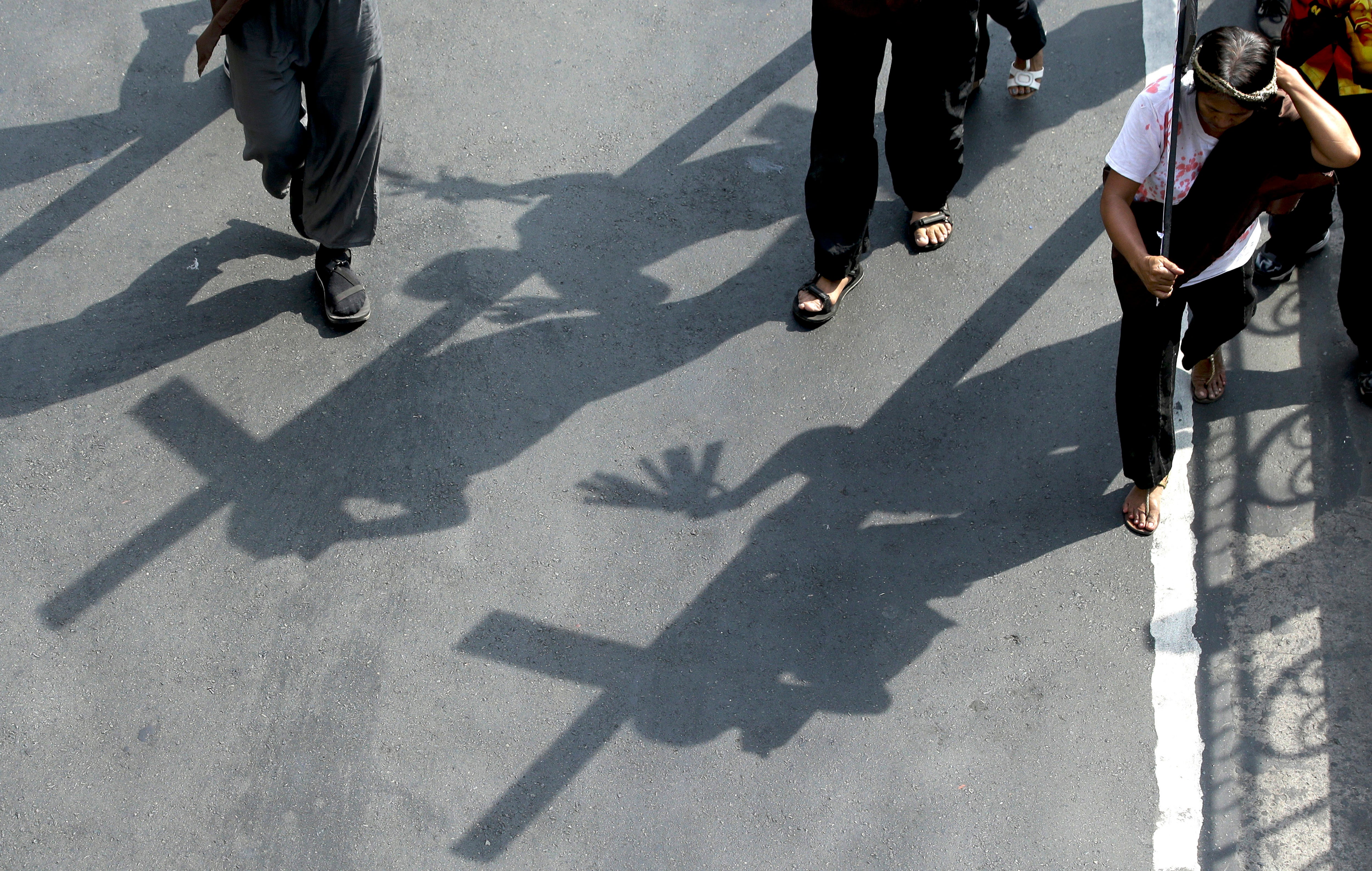Villager, 63, says he is getting too old to be crucified for the 35th time
Ruben Enaje says he is getting too old to be crucified

Your support helps us to tell the story
From reproductive rights to climate change to Big Tech, The Independent is on the ground when the story is developing. Whether it's investigating the financials of Elon Musk's pro-Trump PAC or producing our latest documentary, 'The A Word', which shines a light on the American women fighting for reproductive rights, we know how important it is to parse out the facts from the messaging.
At such a critical moment in US history, we need reporters on the ground. Your donation allows us to keep sending journalists to speak to both sides of the story.
The Independent is trusted by Americans across the entire political spectrum. And unlike many other quality news outlets, we choose not to lock Americans out of our reporting and analysis with paywalls. We believe quality journalism should be available to everyone, paid for by those who can afford it.
Your support makes all the difference.A villager plans to be nailed to a wooden cross for the 35th time to reenact Jesus Christ’s suffering in a brutal Good Friday tradition he said he would devote to pray for peace in Ukraine, Gaza and the disputed South China Sea.
Ruben Enaje, a 63-year-old carpenter and sign painter, said he and seven other villagers have registered for the real-life crucifixions, which have become an annual religious spectacle that draws hundreds of tourists in three rural communities in Pampanga province north of Manila.
The gory ritual resumed last year after a three-year pause due to the coronavirus pandemic. It has turned Enaje into a village celebrity for his role as the “Christ” in the Lenten reenactment of the Way of the Cross.
Ahead of the crucifixions, Enaje said that he has considered ending his annual religious penitence due to his age but said he could not turn down requests from villagers for him to pray for sick relatives and all other kinds of maladies.

The need for prayers has also deepened in an alarming period of wars and conflicts worldwide, he said.
"If these wars worsen and spread, more people, especially the young and old, would be affected. These are innocent people who have totally nothing to do with these wars,” Enaje said.
Despite the distance, the wars in Ukraine and Gaza have helped send the prices of oil, gas and food soaring elsewhere, including in the Philippines, making it harder for poor people to stretch their meagre income, he said.
Closer to home, the escalating territorial dispute between China and the Philippines in the South China Sea has also sparked worries because it’s a lopsided conflict, Enaje said. “China has many big ships. Can you imagine what they could do?" he asked.
"This is why I always pray for peace in the world,” he said and added he would also seek relief for people in southern Philippine provinces, which have been hit recently by flooding and earthquakes.
In the 1980s, Enaje survived nearly unscathed when he accidentally fell from a three-story building, prompting him to undergo the crucifixion as thanksgiving for what he considered a miracle. He extended the ritual after loved ones recovered from serious illnesses, one after another, and he landed more carpentry and sign-painting job contracts.

During the annual crucifixions on a dusty hill in Enaje’s village of San Pedro Cutud in Pampanga and two other nearby communities, he and other religious devotees, wearing thorny crowns of twigs, carry heavy wooden crosses on their backs for more than a kilometer (more than half a mile) often in the scorching summer heat. Village actors dressed as Roman centurions later hammer four-inch (10cms) stainless steel nails through their palms and feet, then set them aloft on wooden crosses under the sun for about 10 minutes as a large crowd prays and snaps pictures.
Other penitents walk barefoot through village streets and beat their bare backs with sharp bamboo sticks and pieces of wood. Some participants in the past opened cuts in the penitents’ backs using broken glass to ensure the ritual was sufficiently bloody.
Many of the mostly impoverished penitents undergo the ritual to atone for their sins, pray for the sick or for a better life, and give thanks for miracles.
The gruesome spectacle reflects the Philippines’ unique brand of Catholicism, which merges church traditions with folk superstitions.
Church leaders in the Philippines, the largest Catholic nation in Asia, have frowned on the crucifixions and self-flagellations. Filipinos can show their faith and religious devotion, they say, without hurting themselves and by doing charity work instead, such as donating blood, but the tradition has lasted for decades.